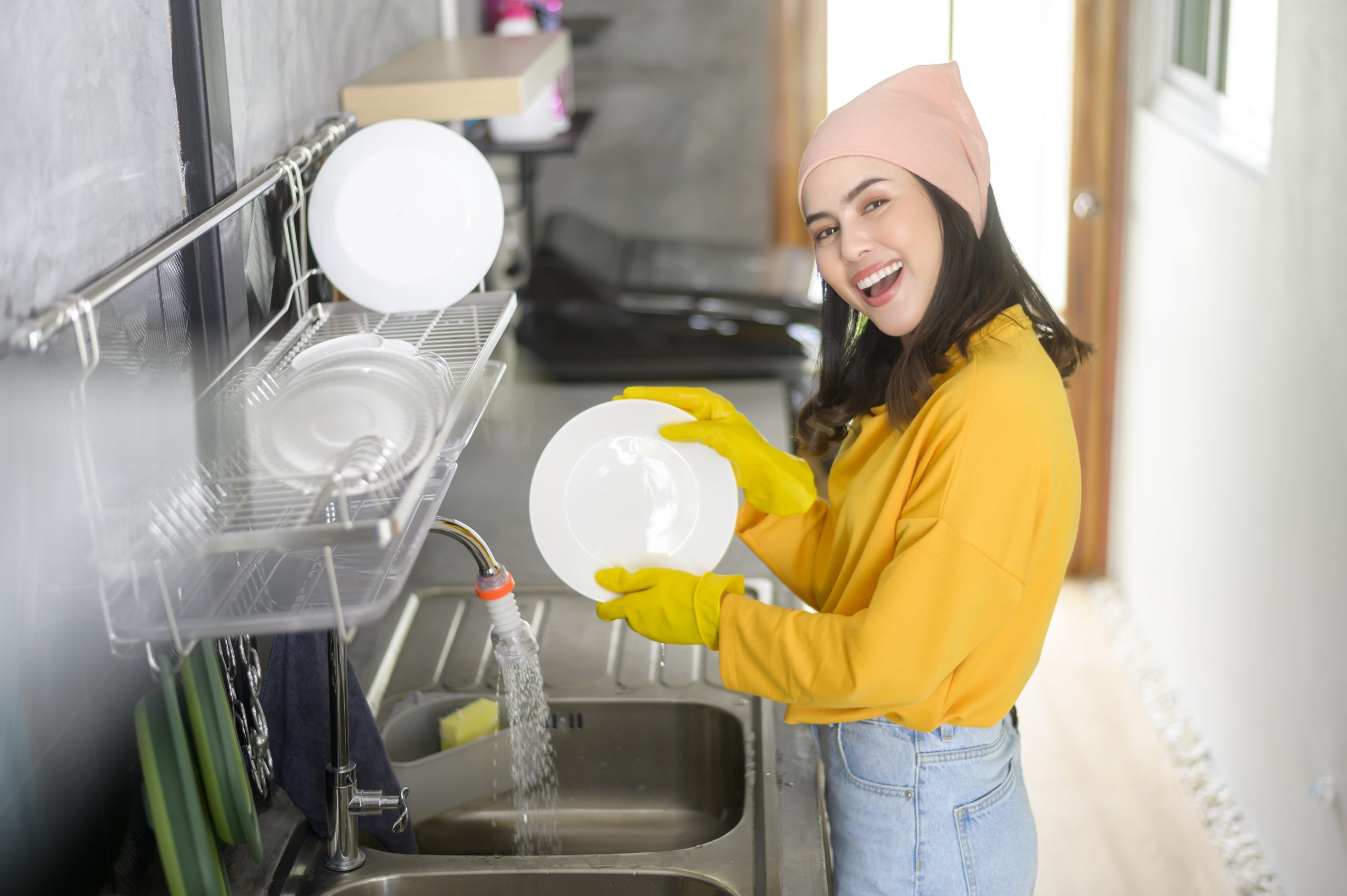Washing dishes might not be the most glamorous task, but it’s a necessary part of keeping a clean and organized kitchen. Whether you’re tackling a mountain of dishes after a big dinner party or just managing your daily dishwashing, learning how to do it quickly and efficiently can save you time and effort. Here’s a quick read-through to help you wash dishes like a pro.
1. Gather Your Supplies
Before you begin, make sure you have all the necessary supplies at hand:
- AlClean’s Dish Wash
- A sponge or dishcloth
- A dish brush (optional)
- A drying rack or clean towels
- Rubber gloves (optional, but great for protecting your hands)
- Scrubbing pad (for tough grime)
Having everything within reach will prevent you from stopping midway to grab something you forgot.
2. Prep Your Dishes
Scrape-Off Food Residue: Before you start washing, scrape off any leftover food into the trash or compost bin. This step prevents your dishwater from becoming greasy and contaminated too quickly.
Soak Stubborn Items: If you have pots, pans, or dishes with stuck-on food, fill them with hot, soapy water and let them soak while you wash the easier items. This will make scrubbing them much easier later on.
3. Organize Your Workspace
Clear the Sink: Make sure your sink is empty and clean. If you have a double sink, use one side for washing and the other for rinsing. If you have a single sink, use a dishpan for soapy water and another for rinsing.
Set Up a Drying Area: Place a drying rack or clean towels on the counter next to the sink. This will allow you to easily transfer clean dishes from the sink to the drying area.
4. Wash in the Right Order
To maximize efficiency, wash your dishes in the following order:
- Glasses and cups: These are usually the least dirty and can be washed quickly.
- Cutlery: Knives, forks, and spoons should come next.
- Plates and bowls: These are generally more soiled and take a bit more time.
- Pots, pans, and bakeware: Save these for last as they often require the most scrubbing.
5. Two-Basin Method
Pour hot soapy water into one sink and hot clean water into the other if your sink has a dual function. Use the second sink for rinsing. If you only have one sink, you can use a dishpan for the soapy water and the sink for rinsing.
Wash: Submerge each item in soapy water, scrub it thoroughly with a sponge or dish brush, and remove all food particles and grease.
Rinse: Once clean, rinse the item in hot water to remove any soap residue. Hot water helps the dishes dry faster and more hygienically.
6. Drying
Air Dry: Place rinsed dishes on a drying rack. Air drying is more hygienic than towel drying because it reduces the chance of bacteria from towels transferring onto your clean dishes.
Towel Dry: If you’re in a hurry, use a clean, dry towel to dry the dishes immediately after rinsing. Make sure to change the towel frequently to avoid spreading germs.
7. Clean Up
After washing all the dishes, clean the sink and any dishpans you use. Wipe down the countertops and put away any remaining dishwashing supplies.
8. Tips for Efficiency
Use the Right Tools: A good-quality sponge or brush can make a big difference in how quickly and effectively you can clean your dishes.
Keep Hot Water Running: Hot water cuts through grease more effectively and helps dishes dry faster. Keep the water running hot while you wash.
Don’t Let Dishes Pile Up: Washing dishes immediately after meals prevents food from hardening and makes the task much quicker and easier.
Conclusion
Washing dishes doesn’t have to be a dreaded chore. With these tips, you’ll have more time to enjoy your clean kitchen and less time spent scrubbing away at dirty dishes. Happy washing!

